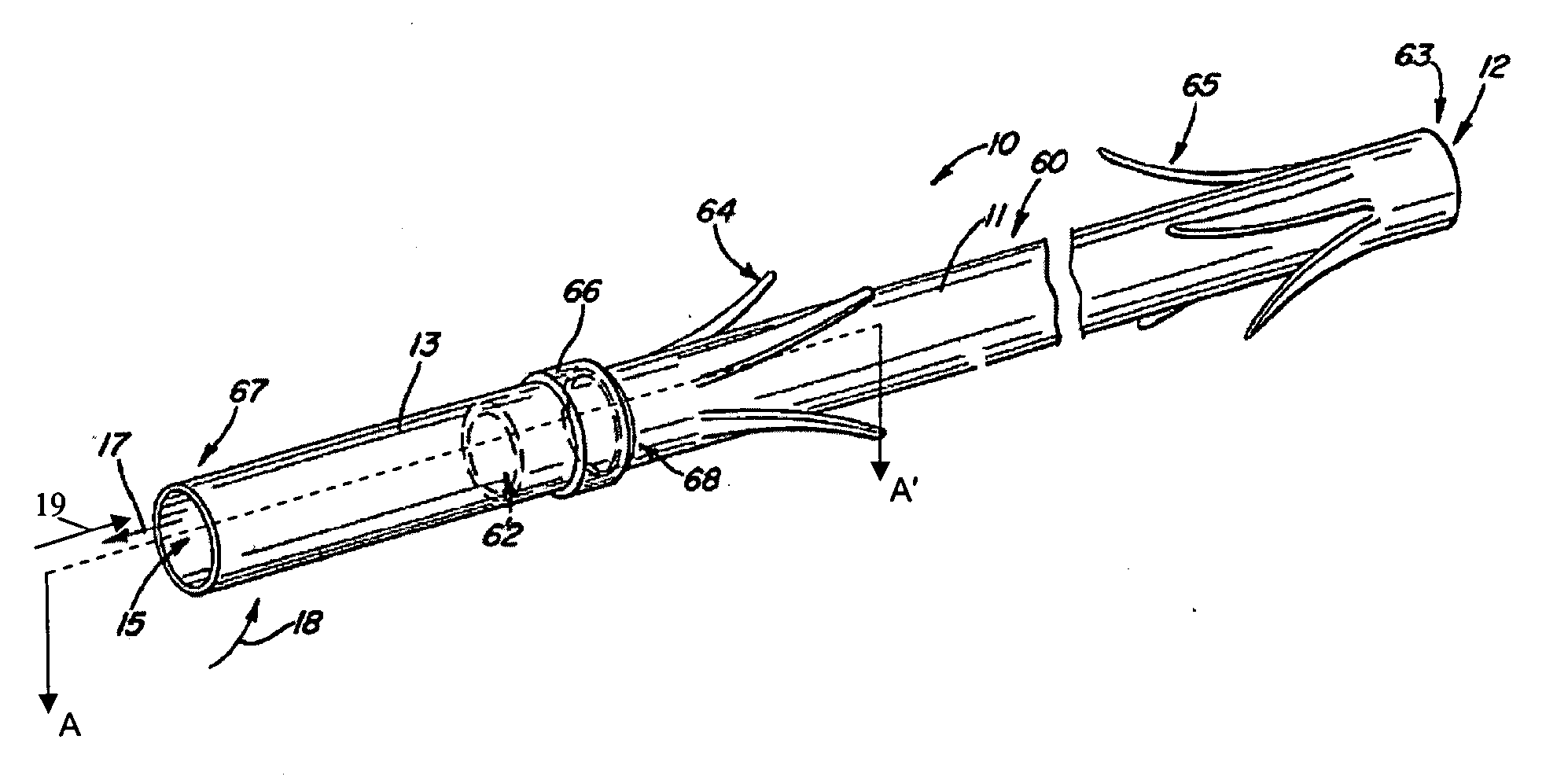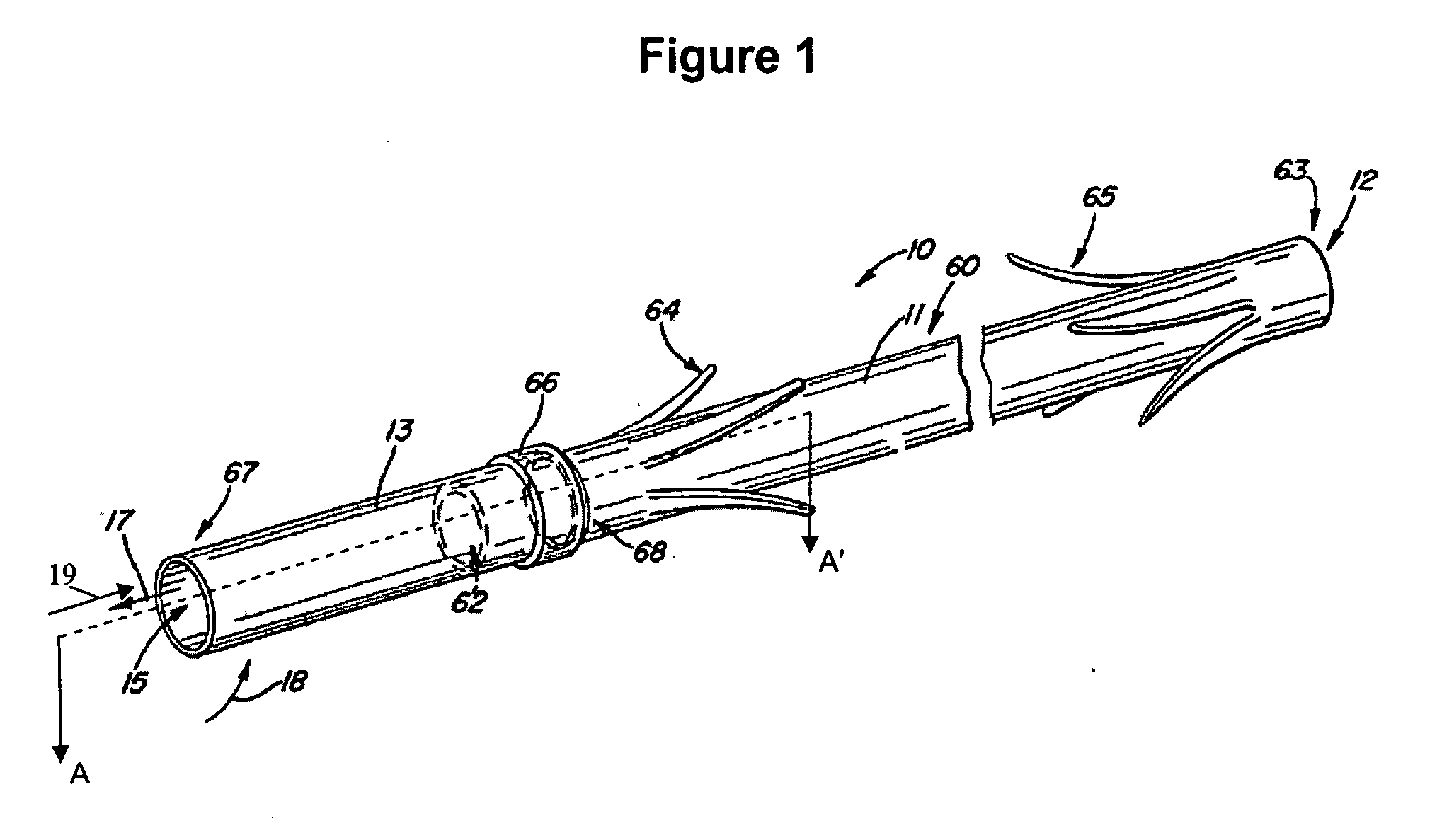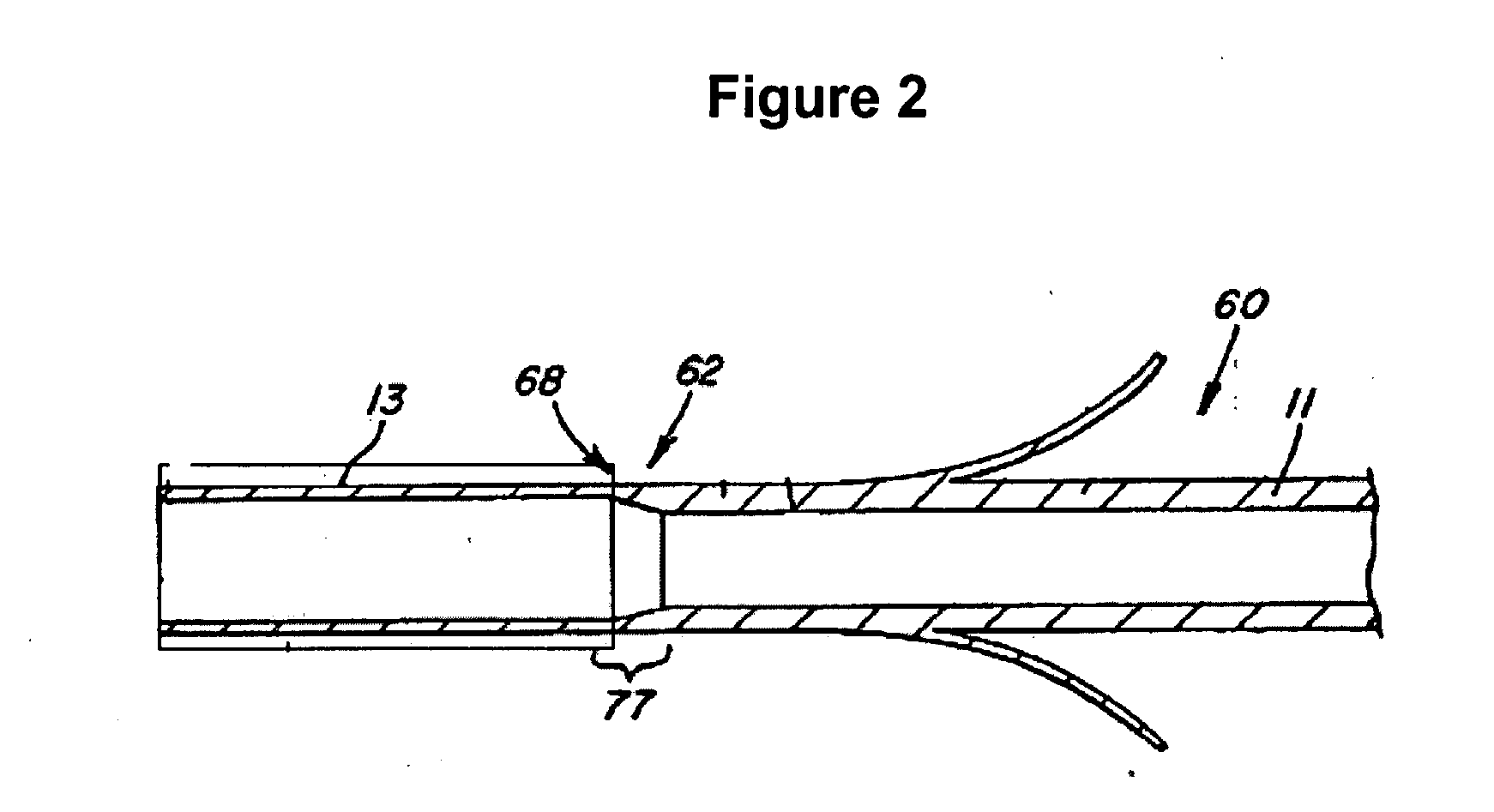Medical device having a sleeve valve with bioactive agent
a bioactive agent and medical device technology, applied in the field of implantable medical devices, can solve the problems of occlusion of drainage stents, recurrent biliary obstruction, infection or obstruction of drainage lumens, etc., and achieve the effect of preventing material backflow
- Summary
- Abstract
- Description
- Claims
- Application Information
AI Technical Summary
Benefits of technology
Problems solved by technology
Method used
Image
Examples
Embodiment Construction
[0021] The following detailed description and appended drawings describe and illustrate various exemplary embodiments of the invention. The description and drawings serve to enable one skilled in the art to make and use the invention, and are not intended to limit the scope of the invention in any manner.
[0022] The invention provides medical devices for implantation in a body vessel, methods of making the medical devices, and methods of treatment that utilize the medical devices.
[0023] As used herein the terms “comprise(s),”“include(s),”“having,”“has,”“contain(s),” and variants thereof, are intended to be open-ended transitional phrases, terms, or words that do not preclude the possibility of additional acts or structure.
[0024] The term “effective amount” refers to an amount of an active ingredient sufficient to achieve a desired affect without causing an undesirable side effect. In some cases, it may be necessary to achieve a balance between obtaining a desired effect and limiti...
PUM
 Login to View More
Login to View More Abstract
Description
Claims
Application Information
 Login to View More
Login to View More - R&D
- Intellectual Property
- Life Sciences
- Materials
- Tech Scout
- Unparalleled Data Quality
- Higher Quality Content
- 60% Fewer Hallucinations
Browse by: Latest US Patents, China's latest patents, Technical Efficacy Thesaurus, Application Domain, Technology Topic, Popular Technical Reports.
© 2025 PatSnap. All rights reserved.Legal|Privacy policy|Modern Slavery Act Transparency Statement|Sitemap|About US| Contact US: help@patsnap.com



